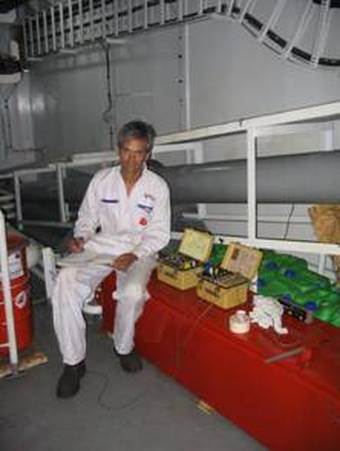Propulsion Shaft Alignment
Marine propulsion shaft alignment is a core part of LamaLo's business. With respect to existing alignment problems, we take a Systems Engineering approach. All aspects of the shaftline alignment are investigated by using a combination of analytical modeling, on-site measurements, documentation review, and analysis of the operating environment, bearing/seal design and shipyard construction practices. A least-cost solution is sought. Alignment services include the following:
Theoretical Modeling
Measurements
Analysis and Reporting
Cost
Theoretical Modeling
- Development of Alignment Criteria: bearing reactions, bearing wear, bending stress, shaft slope, etc.
- Determination of Influence Coefficients: change in bearing load for unit displacement of each bearing position\
- Determination of Prescribed Alignment Condition: bearing offsets and reactions, and shaft stress, deflection, shear stress, and relative slope.
- Specification of Alignment Procedures: sequence and method of installation, and gap/sag values if applicable
Measurements
- Bearing Reactions using the strain gauge technique and Jack-up Method
- Bearing offsets are estimated from the measured reactions and the influence coefficients.
- Comparisons are made of the measured condition relative to the prescribed condition and the alignment criteria.
- Recommendations for adjustments to bearing offsets, if required, are provided on-site. Most cost-effective solution is sought.
- Monitoring Systems designed specifically for each vessel are offered. Such systems can result in significant cost savings by reducing maintenance costs, and the inspection frequency of the propeller shafting and bearings
Analysis and Reporting
- Results are provided on-board the vessel. This includes an assessment as to the alignment condition and what, if any, action is required. A formal Engineering report is submitted within two weeks of the completion of the tests.
Cost
- Fixed-price or cost plus quotes are provided.
